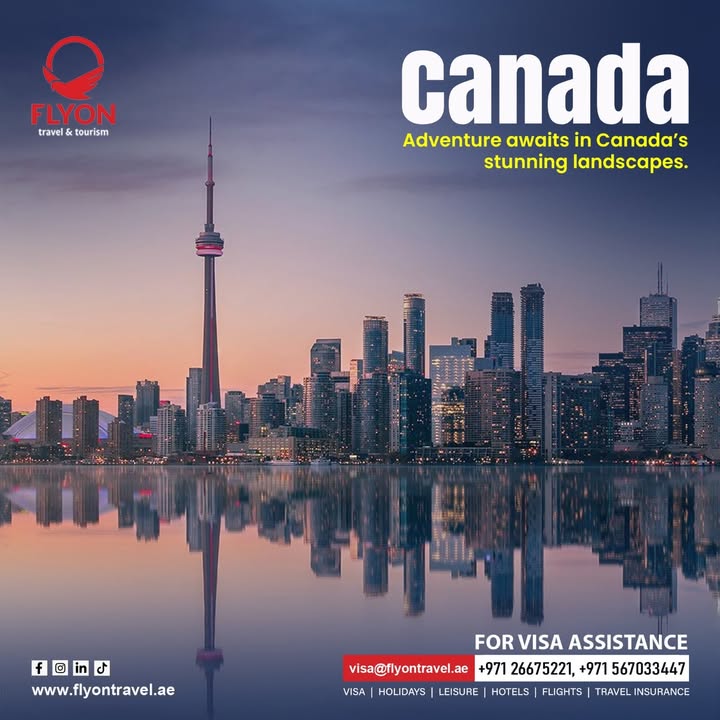How Minor Mistakes in Canada Visa Forms Lead to Major Rejections ? | FlyOn Travel & Tourism

Strong 8k brings an ultra-HD IPTV experience to your living room and your pocket.
Filing for a Canadian visa is often seen as a paperwork-heavy but straightforward process. But here’s the harsh truth: even small errors—things that seem harmless or easy to overlook—can be enough to get your visa denied.
People usually think rejections happen due to big red flags like criminal records or lack of funds. While that’s sometimes true, many applicants face refusal simply because of minor inconsistencies or technical mistakes in their visa forms when they don't go for expert Canada visa assistance. Let’s break down how these little errors can turn into major problems.
1. Mismatched Job Titles or Work Descriptions
This is surprisingly common. You might write “Software Engineer” on your application, but your experience letter says “Developer” or “IT Analyst.” That might not seem like a big deal, but to a visa officer trying to verify your work experience—it is.
If your job title doesn’t match the NOC code (National Occupation Classification) or if the description of your duties doesn’t align with the official expectations of that job category, your application can be flagged as misleading or incomplete.
Tip: Use the official NOC site to match your role and duties exactly with what’s expected.
2. Incorrect NAICS Codes (For Business/Investor Visas)
If you’re applying under a business stream, the NAICS code you select tells IRCC what kind of business you’re running. Choose the wrong one, and it could look like you're misrepresenting your business type—or worse, trying to game the system.
For example, claiming your company is in "tech development" when you're really offering IT training services might be seen as an intentional error or lack of clarity. This leads to quick rejections.
3. Incomplete Travel History
A lot of applicants either forget, ignore, or underestimate the importance of disclosing full travel history. Even if you think that short weekend trip to Dubai five years ago doesn’t matter—it does.
Visa officers check for gaps in your travel record. If dates overlap, locations are missing, or visa stamps in your passport don’t align with what you wrote on the form, it raises a red flag. Incomplete history can make your application look careless, or worse, suspicious.
4. Inconsistent Personal Information
This includes mistakes like:
- Using a different spelling of your name (e.g., Mohammad vs. Muhammad)
- Wrong birthdates
- Confusing marital status info
- Not mentioning dependents properly
Even slight inconsistencies can cause delays or rejections, especially if they make it harder to verify your background. In some cases, this is treated as a failure to disclose information, which is a serious issue.
5. Typos in Passport Numbers, Dates, or Contact Details
Yes—something as simple as a typing mistake in your passport number, email, or phone number can cause chaos. It might prevent the visa office from verifying your identity or contacting you. You could miss important emails or requests for additional documents, which can lead to a straight denial due to “lack of response.”
6. Wrong or Conflicting Answers in Different Forms
Many Canadian visa applications include multiple forms—like the IMM 5257, Schedule A, family information, etc. If your answers don’t match across all forms, that’s a red flag.
For instance, listing your brother as living in Canada in one form, but forgetting to mention him in another where asked about relatives, creates confusion. IRCC might think you’re hiding something, and that can be grounds for refusal.
7. Poorly Written Letters of Explanation (LoE)
Sometimes, people do realize there’s a gap or issue and try to explain it in a Letter of Explanation. But if that letter is vague, confusing, or full of errors, it won’t help your case—it might actually make things worse.
Your LoE should be clear, honest, and to the point. Don’t overcomplicate. Don’t try to hide things. Just explain what happened and provide proof when possible.
8. Missing Signatures or Incomplete Forms
Some applicants forget to digitally sign or complete a form fully before submission. Others might skip optional sections that are actually useful. Incomplete forms can get your application rejected without much review.
So, What Can You Do?
- Triple-check everything before submitting
- Use the official Canadian government tools to match codes and job descriptions
- Be consistent across all forms
- Avoid guessing—if you’re unsure about a detail, get help
If possible, work with a licensed immigration consultant.
Final Thought
It’s frustrating, but true: a tiny mistake on your visa form can cost you months of time, money, and opportunity. Immigration officers process thousands of applications, and they’re trained to catch even small red flags. So, don’t let something minor be the reason your dreams of Canada are delayed—or denied.
Double-check. Get it right. Because in visa applications, details are everything.
Note: IndiBlogHub features both user-submitted and editorial content. We do not verify third-party contributions. Read our Disclaimer and Privacy Policyfor details.



